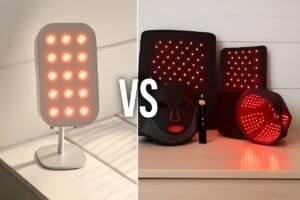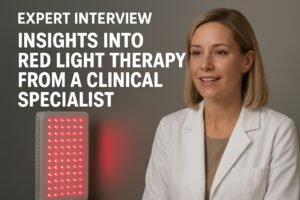Benefits & Considerations of Red Light Therapy for Seniors
Key Takeaways
- Red light therapy can provide significant pain relief for seniors with arthritis and joint inflammation without the side effects of medications.
- Studies show red light therapy may improve cognitive function and sleep quality in seniors, potentially benefiting those with dementia or sleep disorders.
- The cellular regeneration properties of red light therapy can accelerate wound healing and improve skin health—crucial benefits for aging skin.
- HealthLight offers FDA-cleared red light therapy devices specifically designed to increase circulation and reduce pain for seniors seeking natural treatment options.
- While generally safe, seniors should consult healthcare providers before starting red light therapy, especially those with photosensitivity or certain medical conditions.
Red Light Therapy: A Natural Solution for Senior Health Challenges
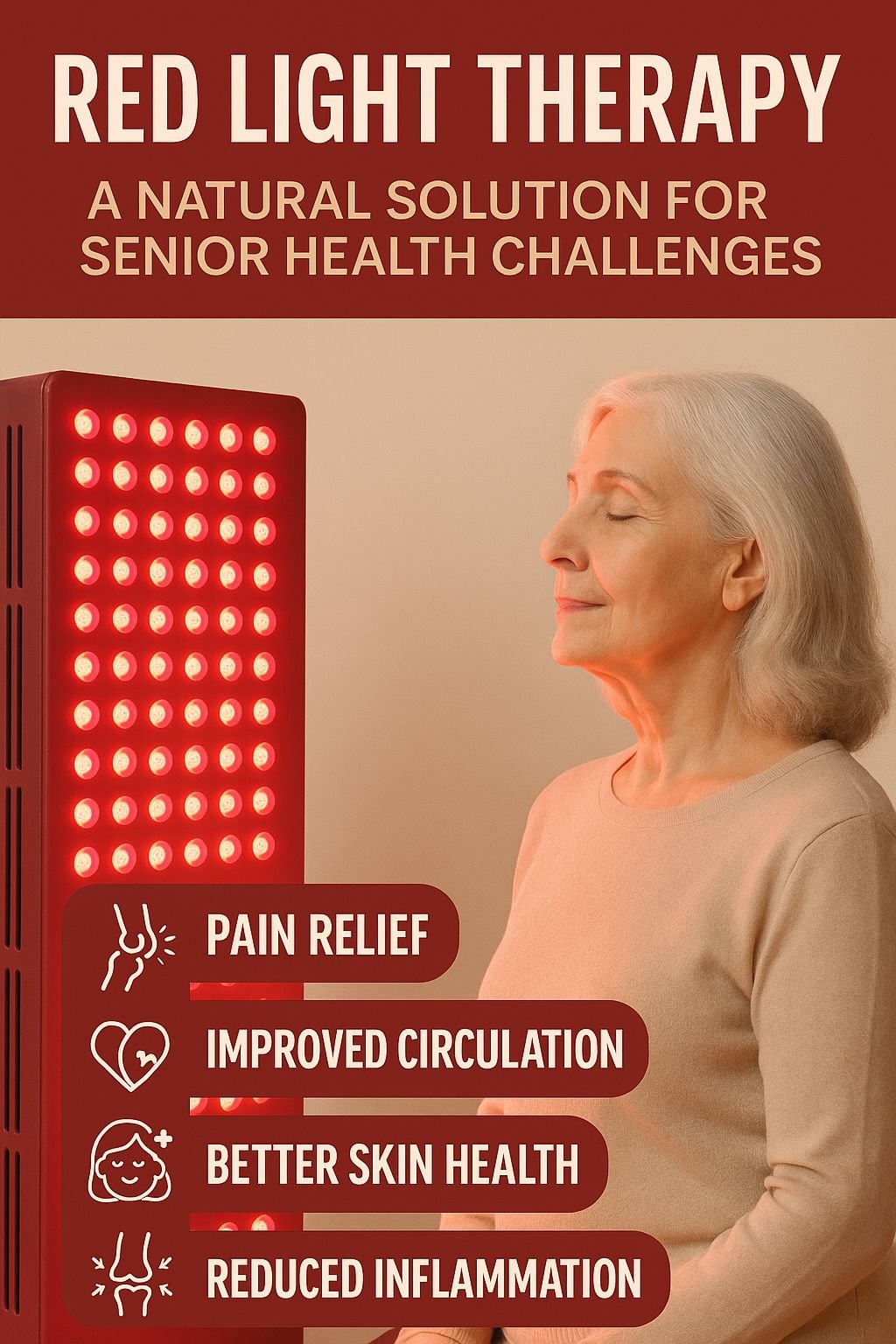
The golden years bring wisdom and perspective, but they often arrive with physical challenges that can diminish quality of life. As we age, finding effective treatments that don’t add more prescription medications to our daily regimen becomes increasingly important. Red light therapy stands out as a non-invasive, drug-free approach that’s gaining recognition for its ability to address multiple health concerns common among seniors. TheraSage, a leader in light therapy technology, has developed specialized devices that harness this therapeutic power specifically for senior health needs.
This natural remedy uses specific wavelengths of red and near-infrared light to penetrate the skin and stimulate cellular function at a deeper level. Unlike medications that often come with unwanted side effects, red light therapy works with your body’s natural processes to promote healing from within. For seniors dealing with chronic pain, limited mobility, or cognitive concerns, this approach offers a promising alternative or complement to conventional treatments.
The appeal of red light therapy extends beyond its effectiveness – it’s also remarkably simple to use. Whether at a medical facility, spa, or in the comfort of home, these treatments can be easily incorporated into a senior’s wellness routine. As we explore the science and benefits of this therapy, you’ll discover why many healthcare professionals now recommend it as part of a comprehensive approach to healthy aging.
How Red Light Therapy Works for Aging Bodies
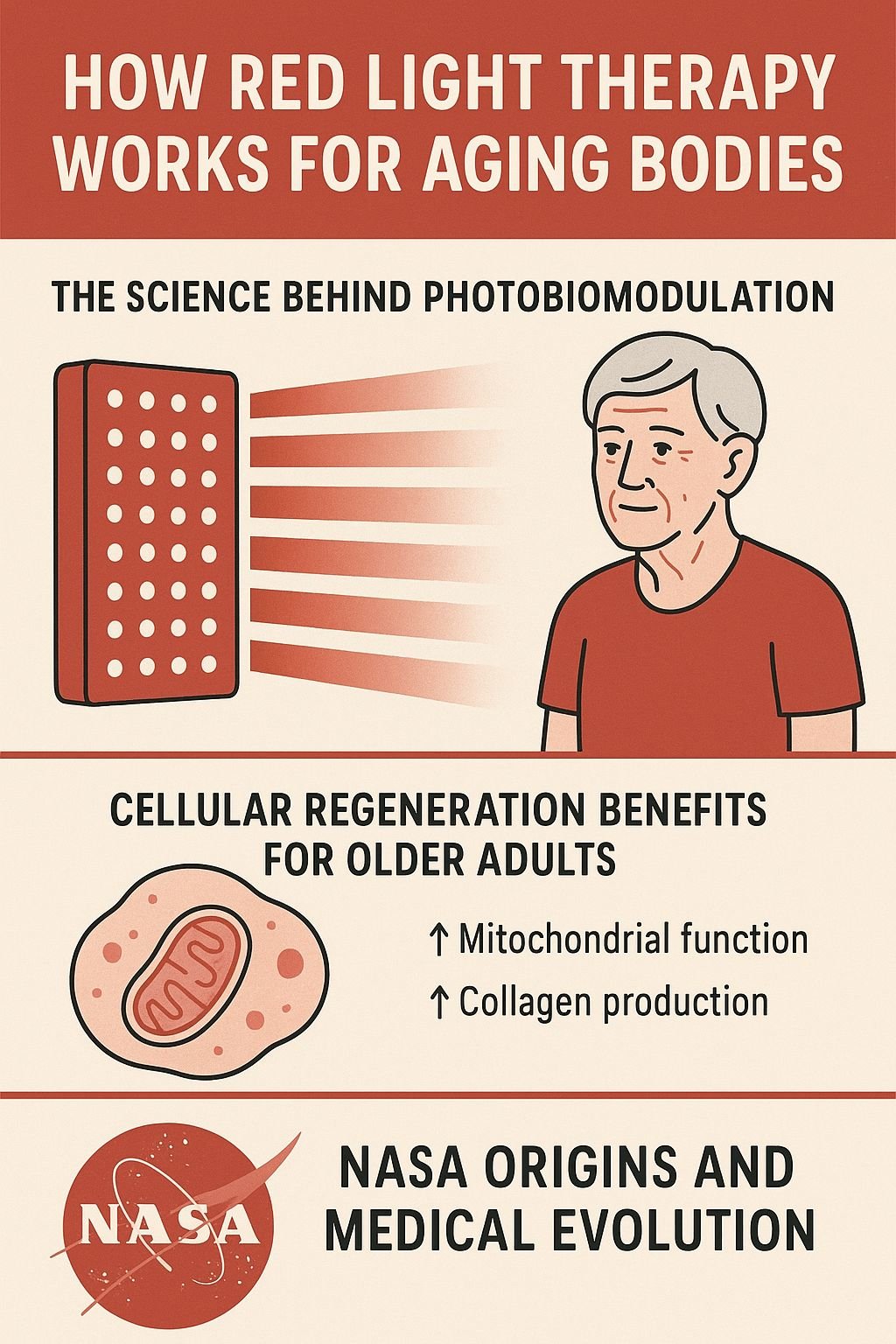
As we age, our cells gradually lose efficiency in producing energy and repairing damage. Red light therapy directly addresses this fundamental aspect of aging through a process that energizes cellular function. This isn’t just marketing speak – it’s backed by decades of scientific research showing how specific wavelengths of light can penetrate skin and influence cellular behavior.
The Science Behind Photobiomodulation
Red light therapy, scientifically known as photobiomodulation, works at the cellular level by interacting with mitochondria – the powerhouses of our cells. When red and near-infrared light wavelengths (typically 630-850 nm) penetrate skin tissues, they’re absorbed by photoreceptors in the mitochondria, triggering increased production of adenosine triphosphate (ATP), the energy currency of cells. This boost in cellular energy is particularly beneficial for seniors, whose natural ATP production often declines with age. The increased cellular energy doesn’t just make you feel more energetic—it enables your body to function more efficiently, from nerve transmission to muscle contraction to tissue repair.
Cellular Regeneration Benefits for Older Adults
Perhaps the most remarkable aspect of red light therapy for seniors is its ability to stimulate cellular regeneration and repair. As we age, our body’s natural healing processes slow down significantly, making recovery from injuries longer and more difficult. Red light therapy has been shown to accelerate wound healing by increasing collagen production, improving circulation, and reducing inflammatory markers. For seniors with diabetes or vascular issues that compromise healing, this regenerative effect can be particularly valuable.
Red light therapy also boosts the production of fibroblasts—the cells responsible for producing collagen and other structural proteins that maintain skin elasticity and support joint function. This regenerative effect extends to multiple tissue types throughout the body, making the therapy uniquely comprehensive in its benefits. Unlike treatments that target just symptoms, red light therapy addresses the underlying cellular mechanisms of aging.
NASA Origins and Medical Evolution
The story of red light therapy begins with NASA research in the 1990s, when scientists were exploring ways to grow plants in space and treat astronauts’ medical issues during long-duration missions. They discovered that red LED lights not only helped plants grow, but also accelerated healing of wounds and reduced pain in human subjects. This discovery led to expanded research into the medical applications of specific light wavelengths.
From these space-age beginnings, red light therapy has evolved into a recognized medical treatment supported by a growing body of clinical evidence. Today’s devices are far more sophisticated than the early prototypes, with precise wavelength calibration and treatment protocols developed through rigorous research. For seniors considering this therapy, this scientific foundation provides reassurance that they’re not just exploring a passing wellness trend, but a treatment with legitimate medical credentials and ongoing research interest.
Top 5 Benefits of Red Light Therapy for Seniors
While the science behind red light therapy is fascinating, what matters most to seniors are the tangible health benefits it can provide. Research consistently shows that this therapy can address multiple age-related concerns simultaneously, making it an efficient addition to a senior wellness regimen. Let’s explore the five most significant ways red light therapy can improve quality of life for older adults.
1. Pain Relief for Arthritis and Joint Stiffness
For many seniors, chronic pain from arthritis and joint inflammation can be debilitating, limiting mobility and independence. Red light therapy offers a drug-free alternative that directly targets inflammation at its source. A comprehensive review of 11 clinical studies found that red light therapy consistently reduced pain and improved function in people with various forms of arthritis, particularly in the hands, knees, and shoulders.
The therapy works by reducing inflammatory markers and increasing circulation to affected joints. Unlike pain medications that mask symptoms, red light therapy addresses underlying inflammation while promoting tissue repair. Many seniors report being able to reduce their reliance on pain medications after consistent red light therapy treatments, which can mean fewer medication side effects and interactions—a significant benefit for those already managing multiple prescriptions.
2. Improved Skin Health and Wound Healing
As we age, our skin becomes thinner and loses elasticity, making it more susceptible to tears, wounds, and longer healing times. Red light therapy stimulates collagen production—the essential protein that gives skin its structure and elasticity. Regular treatments can improve skin texture, reduce fine lines, and accelerate wound healing by up to 200% in some studies.
For seniors with diabetes or circulatory issues who face greater challenges with wound healing, red light therapy can be particularly valuable. The therapy’s ability to increase circulation and cellular energy helps deliver more oxygen and nutrients to healing tissues. This can mean the difference between a minor wound healing properly and developing into a more serious condition requiring medical intervention.
3. Enhanced Sleep Quality and Circadian Rhythm
Sleep disturbances become increasingly common with age, yet quality sleep is essential for cognitive function, immune health, and overall wellbeing. Red light therapy has shown promise in helping to regulate circadian rhythms—our body’s internal clock that governs sleep and wake cycles. Unlike blue light from screens that disrupts melatonin production, red light has minimal impact on melatonin while still providing therapeutic benefits.
Several studies have demonstrated that regular red light therapy sessions can help improve both sleep quality and duration in older adults. Participants often report falling asleep more quickly, experiencing fewer nighttime awakenings, and feeling more rested upon waking. For seniors struggling with insomnia or disrupted sleep patterns, this natural approach offers an alternative to sleep medications, which can cause grogginess and increase fall risk.
4. Potential Cognitive Benefits for Memory and Focus
Perhaps one of the most exciting areas of red light therapy research involves its potential effects on brain function. Studies indicate that near-infrared light can penetrate the skull and positively affect brain cells, potentially improving cognitive function. A 2021 research review found that in all 10 studies examined, red light therapy demonstrated benefits for people with dementia, including improved memory, better sleep, and reduced agitation.
The mechanism appears to involve increased cerebral blood flow and enhanced mitochondrial function in brain cells. While research is still emerging, preliminary evidence suggests regular red light therapy may help maintain cognitive function and possibly slow cognitive decline in some seniors. For those concerned about maintaining mental sharpness, this non-invasive approach represents a promising addition to cognitive health strategies.
5. Reduced Inflammation Throughout the Body
Chronic, low-grade inflammation underlies many age-related conditions, from heart disease to diabetes to cognitive decline. Red light therapy has demonstrated powerful anti-inflammatory effects across multiple tissue types, helping to neutralize this root cause of aging. The therapy stimulates the production of anti-inflammatory signaling molecules while reducing pro-inflammatory compounds, creating a more balanced inflammatory response throughout the body.
Different Red Light Therapy Options for Home Use
The growing popularity of red light therapy has led to a variety of home-use options that make this treatment more accessible than ever before. For seniors who prefer the convenience of in-home treatments or who want to supplement professional sessions, understanding the available options is essential for making an informed choice that fits both health needs and lifestyle.
Portable Devices vs. Full-Body Panels
Red light therapy devices generally fall into two main categories: portable targeted devices and larger panel systems. Portable options include handheld wands, small panels, wraps, and even flexible pads that can be placed directly on specific problem areas like arthritic joints or sore muscles. These devices typically cost between $100-$500 and are ideal for treating localized issues or for seniors who travel frequently.
Full-body panels represent a more significant investment, typically ranging from $500 to several thousand dollars depending on size and specifications. These larger systems allow for treatment of multiple body areas simultaneously and generally provide more comprehensive coverage. For seniors with widespread arthritis, multiple pain points, or those seeking both skin and systemic benefits, a full-body panel may offer better results despite the higher initial cost.
Cost Considerations and Medicare Coverage
When evaluating red light therapy options, seniors should consider both upfront costs and long-term value. While professional treatments at medical offices or spas typically range from $50-150 per session, home devices represent a one-time investment that can provide years of treatments. For those requiring regular therapy, a home device often becomes more economical after just a few months of use.
Currently, Medicare typically does not cover red light therapy devices for home use, though some Medicare Advantage plans may offer partial coverage in specific situations. Coverage is more likely when treatments are administered in a medical setting for FDA-approved conditions like diabetic neuropathy or certain skin conditions. Seniors should check with their specific plan and consider speaking with their healthcare provider about obtaining a prescription, which may help with insurance coverage.
Recommended Features for Senior-Friendly Devices
When selecting a red light therapy device, seniors should prioritize features that enhance safety, ease of use, and effectiveness. Look for devices with automatic shut-off timers to prevent overtreatment, adjustable settings for different treatment intensities, and simple, intuitive controls with large, easy-to-read displays. Lightweight construction and ergonomic design are particularly important for those with arthritis or reduced strength in their hands. For a comprehensive guide on setting up such devices, check out this step-by-step installation guide.
Treatment Protocols: Getting the Most from Red Light Therapy
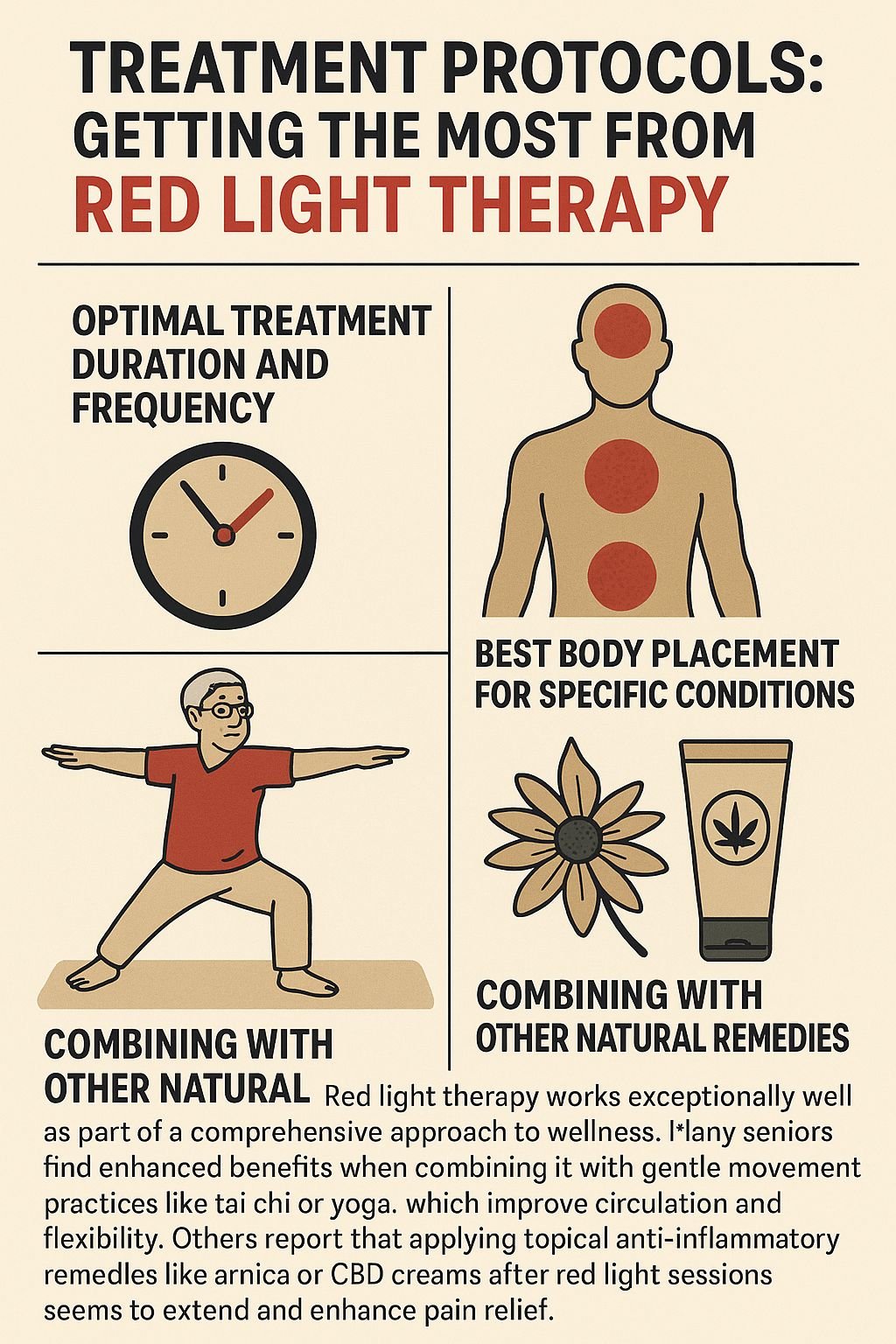
Consistency is the key to success with red light therapy. While a single session may provide temporary relief, the most significant benefits come from regular treatments following established protocols. Understanding the optimal approach can help seniors maximize results while ensuring safety and comfort throughout the process.
Most clinical studies showing positive results have implemented treatments 3-5 times weekly, often for at least 4-6 weeks before evaluating outcomes. This consistent exposure allows for cumulative cellular effects that build over time. Think of red light therapy like exercise—occasional sessions provide some benefit, but a regular routine delivers transformative results.
Optimal Treatment Duration and Frequency
For most conditions, treatment sessions typically range from 5-20 minutes, depending on the device power and the specific condition being addressed. Seniors with chronic pain or inflammatory conditions often benefit from daily treatments, while those using the therapy for skin health or general wellness may see results with 3-4 sessions per week. It’s generally recommended to start with shorter sessions (5-10 minutes) and gradually increase duration as your body adapts to the therapy.
The ideal distance between the device and your body depends on the specific product, but generally ranges from direct contact to about 6-12 inches for panel devices. Always follow manufacturer guidelines for positioning, as the intensity of light diminishes with distance. Many seniors find it helpful to create a relaxing routine around their treatments—perhaps combining sessions with meditation, gentle stretching, or simply using the time to listen to music or audiobooks.
Best Body Placement for Specific Conditions
Targeting the therapy to specific areas yields the best results for localized conditions. For arthritis in knees or hands, place the device directly over the affected joints. Those seeking relief from back pain should position the light over the specific area of discomfort rather than treating the entire back. For wound healing or skin concerns, direct exposure to the affected area is essential, with the light positioned perpendicular to the skin for maximum penetration.
Systemic benefits like improved sleep or reduced overall inflammation may result from treating larger areas like the torso, which contains vital organs and significant blood volume. Some research suggests that exposing the thyroid area can help with energy and hormone balance, while treating the lymph nodes may enhance immune function. For cognitive benefits, devices specifically designed for transcranial treatment (directing light to the head) show the most promising results.
Combining with Other Natural Remedies
Red light therapy works exceptionally well as part of a comprehensive approach to wellness. Many seniors find enhanced benefits when combining it with gentle movement practices like tai chi or yoga, which improve circulation and flexibility. Others report that applying topical anti-inflammatory remedies like arnica or CBD creams after red light sessions seems to extend and enhance pain relief.
Nutritional support can also maximize results, particularly foods rich in antioxidants that support cellular health. Colorful fruits and vegetables, omega-3 fatty acids, and adequate hydration all complement the cellular regeneration effects of red light therapy. Some practitioners also recommend timing red light sessions shortly after taking anti-inflammatory supplements like turmeric or fish oil to potentially enhance their effects.
Safety Considerations and Potential Side Effects
While red light therapy is generally considered very safe, seniors should be aware of important precautions before beginning treatment. Unlike UV light, red and near-infrared wavelengths don’t damage skin or increase cancer risk. However, certain medical conditions and medications may warrant extra caution or professional guidance. For more insights, consider exploring chromotherapy lighting benefits in related therapies.
The most commonly reported side effects are mild and temporary—slight redness or warmth in the treated area, similar to what you might experience after gentle sun exposure. These typically resolve within hours and often diminish with continued use as your body adapts to the therapy. Unlike many medical interventions, red light therapy rarely causes significant adverse reactions, making it appropriate for most seniors seeking natural treatment options.
Who Should Avoid Red Light Therapy
Despite its excellent safety profile, red light therapy isn’t appropriate for everyone. Those with photosensitivity disorders like porphyria or lupus should generally avoid the treatment as it may trigger flare-ups. Seniors with a history of skin cancer should consult with their dermatologist before beginning treatments, especially for areas where cancerous cells have previously been removed.
Caution is also warranted for those with certain eye conditions, as direct exposure of high-intensity light to the eyes can potentially cause damage. Most quality devices come with protective eyewear, which should always be used during facial treatments or when treating areas near the eyes. Seniors with implanted medical devices like pacemakers should check with their cardiologist before using electrical devices of any kind, including red light therapy panels.
Medication Interactions to Watch For
Several common medications can cause photosensitivity, potentially increasing skin reactivity to light therapy. These include certain antibiotics (particularly tetracyclines), some antihistamines, specific cardiovascular medications, and several types of psychiatric drugs. If you’re taking any prescription medications, review them with your healthcare provider or pharmacist before starting red light therapy. In many cases, treatment can still proceed safely, perhaps with adjusted light intensity or duration.
How to Start Your Red Light Therapy Journey Today
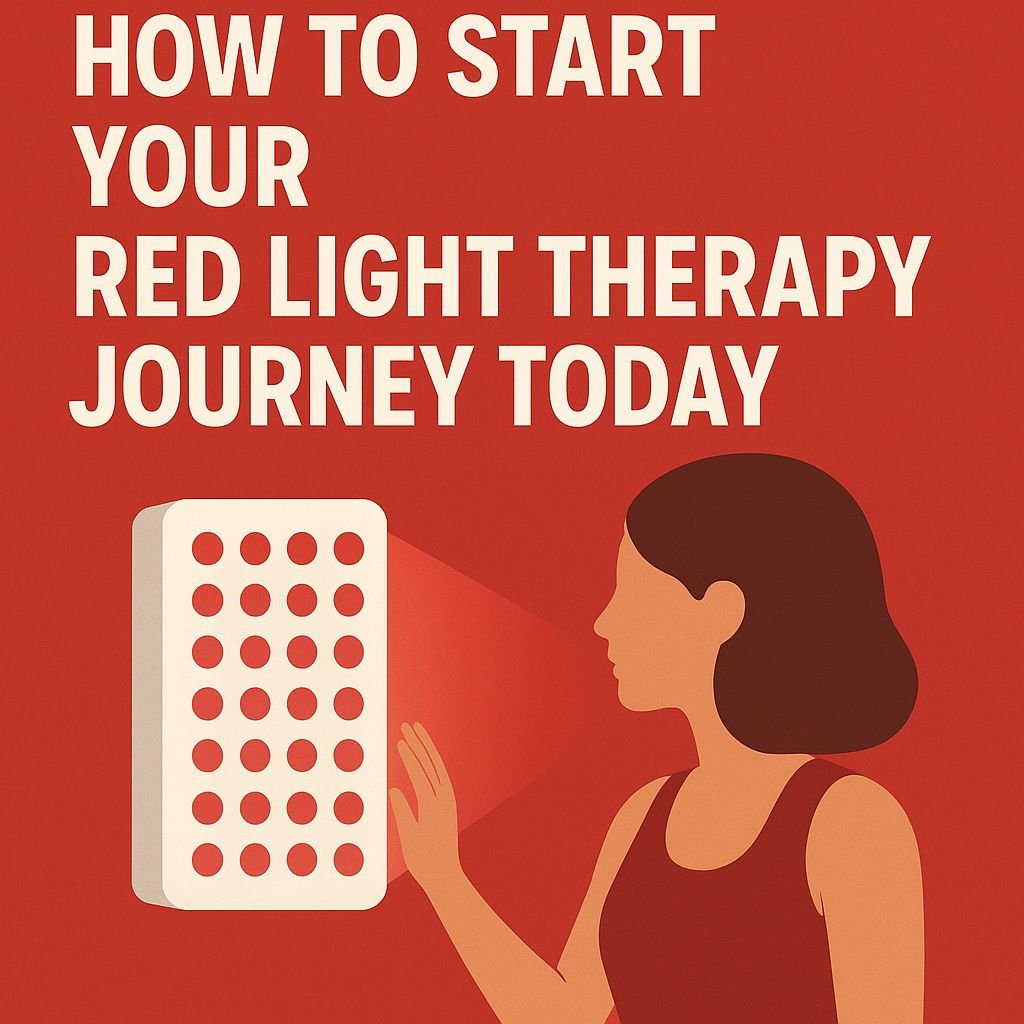
Beginning any new health practice can feel overwhelming, but red light therapy offers a relatively straightforward entry point for seniors seeking natural remedies. The first step is information gathering—understanding the benefits, limitations, and appropriate expectations for this therapy as it relates to your specific health concerns.
Many seniors find it helpful to start with a professional assessment and treatment before investing in a home device. This allows you to experience the therapy firsthand, receive expert guidance on proper use, and determine whether it’s likely to benefit your particular situation. Physical therapists, chiropractors, and integrative medicine practitioners often offer red light therapy and can provide valuable insights tailored to your health profile.
Questions to Ask Your Healthcare Provider
Having a productive conversation with your healthcare provider about red light therapy starts with asking the right questions. Your doctor may not be familiar with the latest research in this field, so approaching the discussion with specific, well-informed questions can help you both make better decisions about incorporating this therapy into your overall health plan.
Begin by asking about potential interactions with your current treatments and whether your specific health conditions might benefit from or be aggravated by light therapy. Inquire about whether they’ve had other patients try this approach and what results they’ve observed. If they’re supportive, ask if they can recommend specific protocols or devices based on your health profile.
- Is red light therapy appropriate for my specific health concerns?
- Could this therapy reduce my need for certain medications?
- How might red light therapy complement my current treatment plan?
- What results should I realistically expect, and in what timeframe?
- Would you recommend professional treatments or a home device for my situation?
Remember that some conventional medical doctors may have limited exposure to light therapy research. If you encounter resistance without specific medical reasons, consider seeking a second opinion from an integrative medicine practitioner who has experience with various complementary approaches including light therapy.
Where to Find Qualified Treatment Centers
- Physical therapy and rehabilitation centers
- Chiropractic and osteopathic practices
- Integrative medicine clinics
- Some dermatology offices
- Medical spas and wellness centers
When evaluating a treatment center, inquire about the specific devices they use, including wavelengths and power output. Quality facilities should be able to explain their treatment protocols and expected outcomes based on your condition. Ask about the training their staff has received specifically in light therapy administration and whether they customize treatments for different health concerns.
Don’t hesitate to ask about pricing structures, package options, and whether they can provide documentation that might help with insurance reimbursement. Some facilities offer introductory sessions at reduced rates, allowing you to experience the therapy before committing to a treatment series. For a better understanding of therapy options, you might want to explore this guide for beginners on near-infrared sauna technology.
For those unable to travel regularly to treatment centers, remember that many providers can guide you in selecting appropriate home devices and creating an effective self-treatment protocol that you can follow independently.
Frequently Asked Questions
As red light therapy gains popularity among seniors, common questions have emerged about everything from effectiveness to practical implementation. Understanding these basics can help you approach this therapy with realistic expectations and the knowledge needed to make informed decisions about incorporating it into your wellness routine.
While research continues to evolve, we’ve gathered answers to the most frequently asked questions based on current scientific understanding and clinical experience. Remember that individual results may vary, and working with knowledgeable healthcare providers can help you develop the most effective approach for your specific needs.
The following answers address common concerns and provide practical guidance for seniors considering or beginning red light therapy. This information supplements but doesn’t replace personalized medical advice from your healthcare team.
How long does it take to see results from red light therapy?
Results from red light therapy typically develop gradually rather than overnight. For pain relief, many seniors report noticing improvements within 1-2 weeks of regular treatments, with effects becoming more pronounced over 4-6 weeks. Skin-related benefits often take 8-12 weeks of consistent use to become clearly visible, as collagen remodeling is a slower process. Sleep improvements may begin after just a few sessions, while cognitive benefits might require several months of regular treatments before noticeable changes occur.
Your individual timeline depends on several factors including your age, overall health status, the specific condition being treated, and your consistency with the recommended protocol. Some seniors with acute inflammation may experience immediate relief after a single session, while those with long-standing chronic conditions typically require longer-term commitment before seeing significant improvement. Keeping a simple journal noting your symptoms before and after beginning therapy can help you objectively track your progress.
Can red light therapy help with neuropathy in seniors?
Emerging research suggests red light therapy shows promise for peripheral neuropathy, particularly diabetic neuropathy which affects many seniors. Studies indicate the therapy may help regenerate nerve tissue, reduce pain signals, and improve circulation to affected areas. Seniors with neuropathic symptoms like numbness, tingling, or burning sensations often report improvements after 4-8 weeks of consistent treatment. For best results, treatments should target both the affected areas (such as feet or hands) and potentially the lower back where peripheral nerves originate.
Is red light therapy covered by Medicare or insurance?
Medicare coverage for red light therapy varies depending on several factors. Traditional Medicare (Parts A and B) may cover treatments when administered by healthcare professionals for specific FDA-approved conditions like certain types of skin disorders or diabetic complications. However, coverage for general pain management or anti-aging applications is limited. Medicare Advantage plans (Part C) sometimes offer more flexibility with complementary treatments, but policies vary widely.
For home devices, coverage is generally more restricted. A letter of medical necessity from your physician can sometimes help secure partial reimbursement, particularly if the device is prescribed as an alternative to more expensive treatments or medications. Some seniors use Health Savings Account (HSA) or Flexible Spending Account (FSA) funds to purchase home devices, as these often qualify as medical expenses even without direct insurance coverage.
- Traditional Medicare: Limited coverage for specific FDA-approved conditions
- Medicare Advantage: Varies by plan; check your specific policy
- Supplemental Insurance: Some plans may provide partial coverage
- HSA/FSA: Often eligible expenses with proper documentation
When seeking insurance coverage, proper medical documentation is essential. Work with your healthcare provider to clearly document your condition, previous treatment attempts, and the medical rationale for recommending light therapy. Some providers can help submit the necessary paperwork for potential reimbursement.
How does red light therapy differ from infrared saunas?
While both technologies use portions of the light spectrum for therapeutic benefits, they function quite differently. Red light therapy delivers concentrated wavelengths (typically 630-850nm) directly to tissues to stimulate cellular function, without necessarily generating significant heat. Infrared saunas, in contrast, use primarily far-infrared wavelengths (usually 3,000-10,000nm) to heat the body from within, creating a deep sweating response similar to traditional saunas but at lower ambient temperatures. Many seniors find red light therapy more comfortable and accessible since it doesn’t require heat tolerance or cardiovascular stamina, making it suitable even for those with heat sensitivity or certain heart conditions that might preclude sauna use.
Can red light therapy help with age-related macular degeneration?
Research into red light therapy for age-related macular degeneration (AMD) shows encouraging preliminary results. A 2020 study published in the Journals of Gerontology found that brief exposure to specific red light wavelengths improved vision in participants with AMD by enhancing mitochondrial function in retinal cells. The improvements were most pronounced in color contrast sensitivity and low-light vision—two areas that typically deteriorate with AMD. While this therapy isn’t yet considered a primary treatment for AMD, some ophthalmologists are beginning to recommend it as a complementary approach alongside conventional care.
Seniors interested in this application should look for devices specifically designed for ocular use, as these provide appropriate wavelengths and safety features. Never use general red light therapy devices directly on or near the eyes without proper eye protection and guidance from an eye care professional. The most promising protocols involve brief (3-5 minute) exposures to specific wavelengths under controlled conditions.
If you’re struggling with AMD or other vision concerns, discuss red light therapy with your ophthalmologist to determine if it might be appropriate as part of your comprehensive eye care plan. While not a replacement for medical treatment, it represents an emerging option that may help preserve vision with minimal risk when properly administered.
For more information about red light therapy devices specifically designed for senior health needs, HealthLight offers FDA-cleared products that can help you experience the benefits of this promising therapy in the comfort of your own home.

